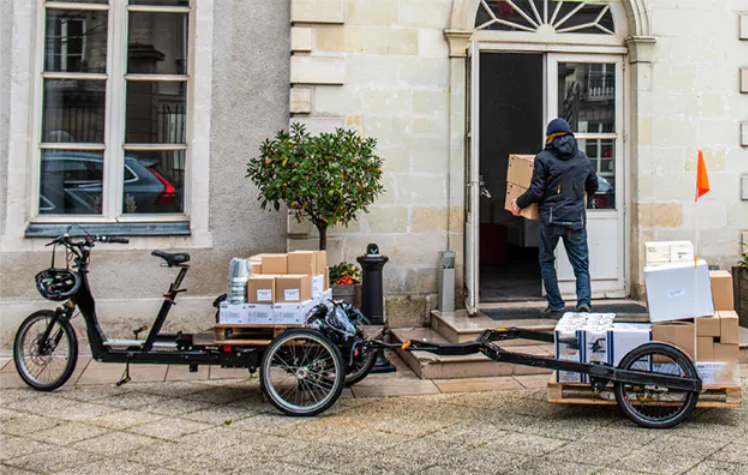Logistics companies could save over half a billion euros annually using mixed electric delivery fleets

A new study by EIT InnoEnergy found that mixed electric fleets of e-cargo bikes and e-vans can save urban logistics providers significant costs compared to a 100 per cent e-van fleet operation and contribute to improving overall life quality in cities.
The research shows for a large logistics player delivering two billion parcels per year with a mixed fleet of 80 per cent e-cargo bikes and 20 per cent e-vans (compared to 100 per cent e-van fleet), the annual cost savings could amount to approximately EUR 554 million by 2030, while reducing last-mile logistics emissions by up to 80 per cent.
The news comes as logistics companies look to improve margins and reduce CO2 emissions in light of e-commerce driving parcel volume in the European Union up by 8-14 per cent each year. At the same time, regulations such as Stockholm’s upcoming inner city ban on combustion-engine vehicles are creating pressure for logistics operators to decarbonise their last-mile delivery operations.
Given these challenges, the new study addresses an existing knowledge gap in relation to the cost, operational and sustainability impacts of adding e-cargo bikes to the mix, laying out clear comparisons between ICE van fleets, e-van fleets, and mixed fleets.
Logistics providers today are dealing with many simultaneous challenges: rising parcel volumes, stricter city regulations, and the need to save costs in a low-margin business. This study demonstrates that e-cargo bikes are not only a sustainable way to address these challenges, but also cost-competitive and viable for major logistics players – already today, and even more so by 2030.Jennifer Dungs, Global Head of Mobility at EIT InnoEnergy
E-cargo bikes: cost-effective delivery solution regardless of mix ratio
Findings showed that the use of e-cargo bikes reduces the total cost per parcel compared to e-vans alone, regardless of the fleet mix and the city layout.
Importantly, the overall savings in all scenarios occur despite added costs incurred by mixed fleets, which primarily consist of increased personnel costs for parcel sorters at micro fulfilment centres and delivery riders.
Improving overall life quality in cities
To harness the potential of mixed fleets, cities and logistics providers have a vested interest in working together. There’s great potential here for the development of public-private partnerships to optimise infrastructure planning, ensuring that the full sustainability, space, and cost-saving benefits are realised. This study is designed to guide decision-makers in Europe through the challenges of managing growing parcel volumes, maintaining cost efficiency, and making last-mile delivery more flexible and sustainable.Jennifer Dungs


 Share this page
Share this page


